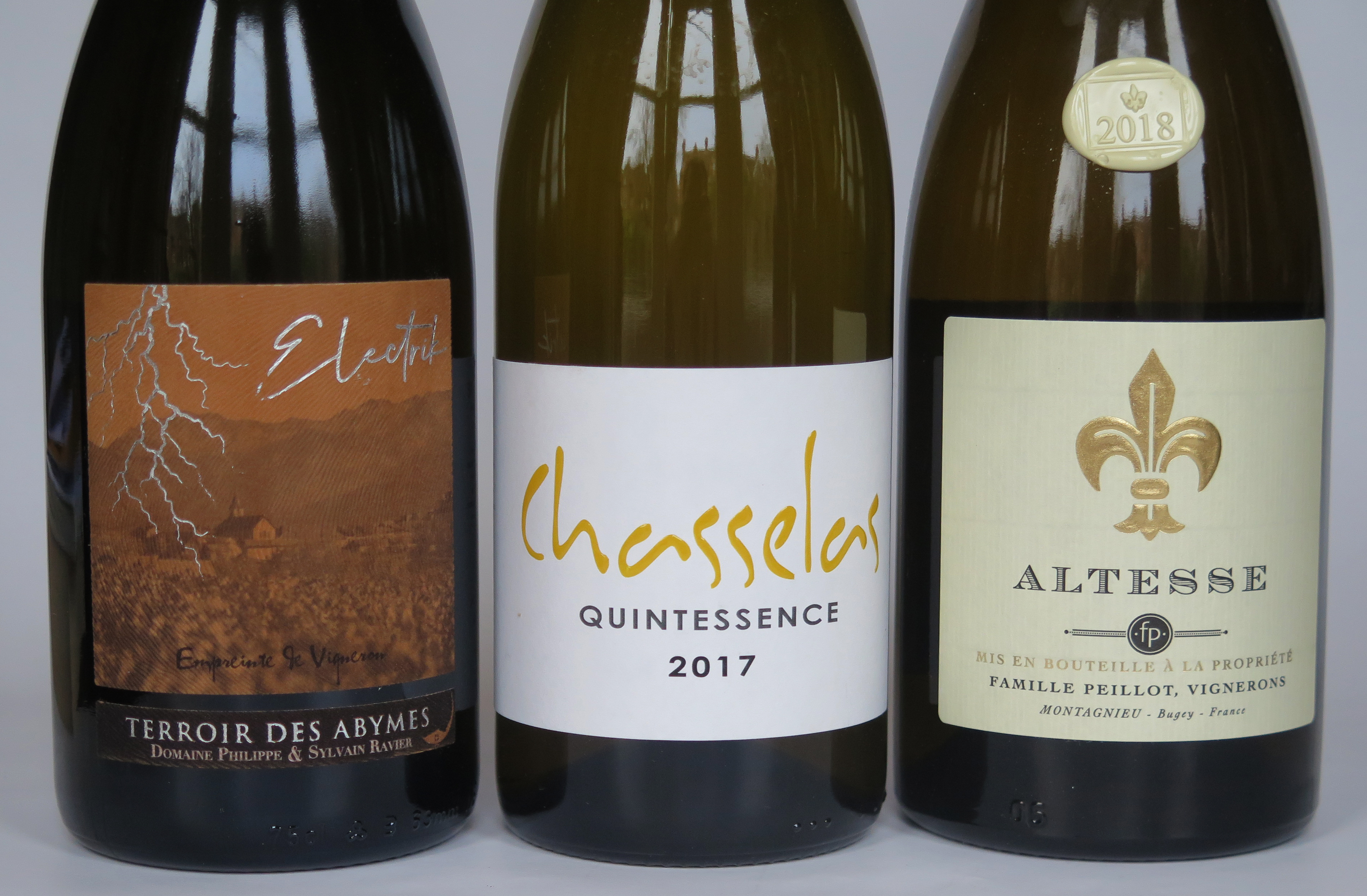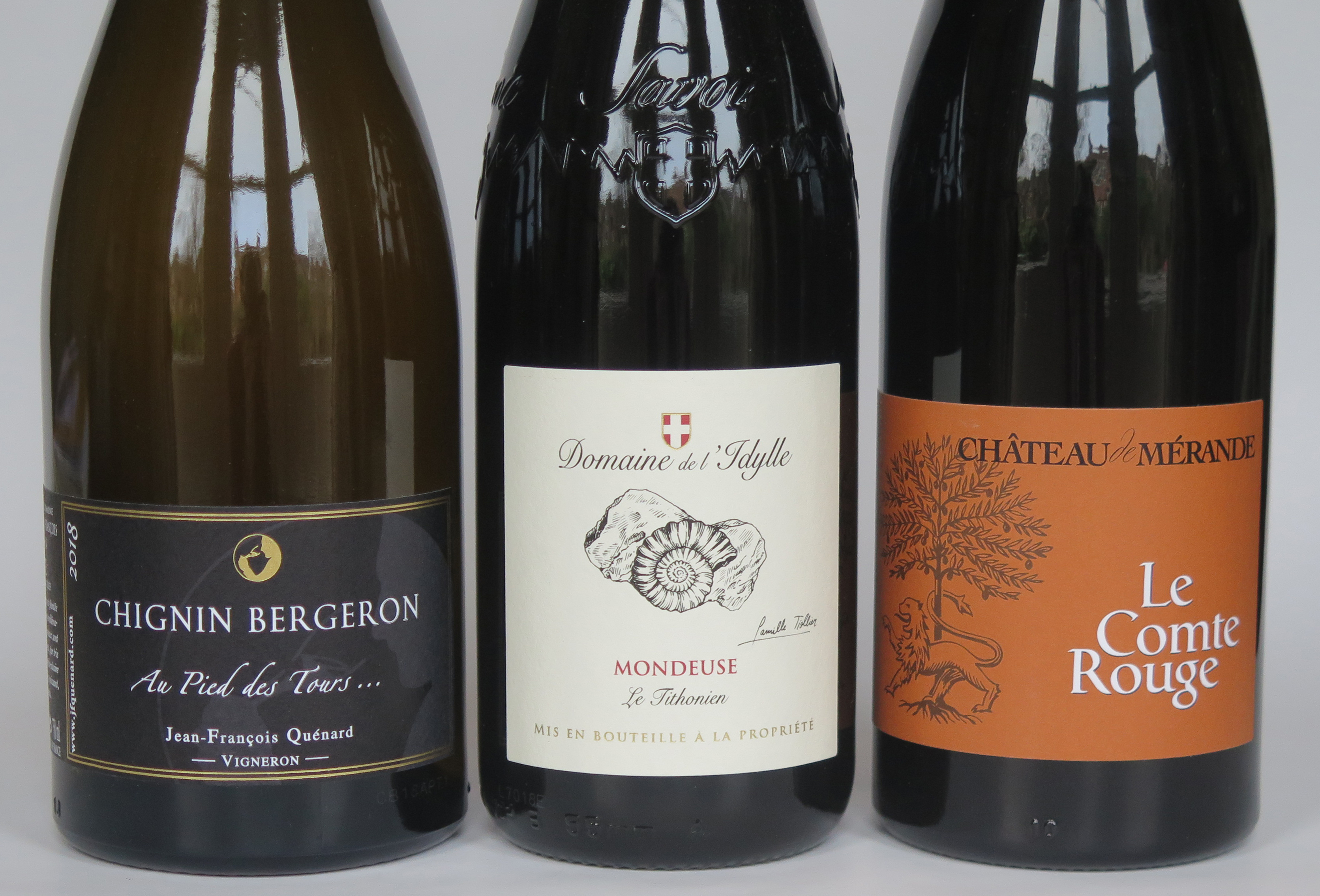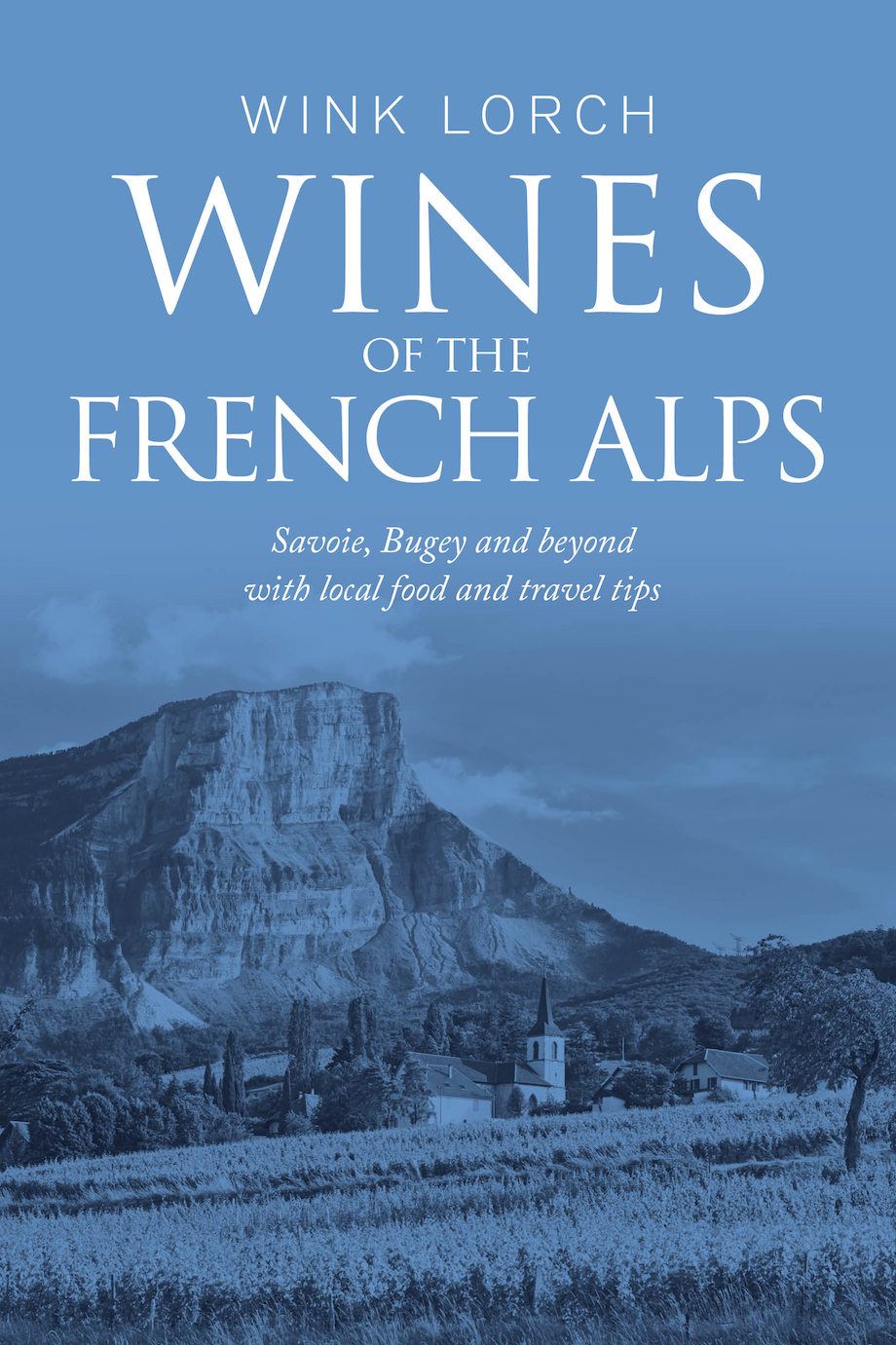Wink is an educator, writer and (self)-publisher who specialises in the wines of the Jura and the Savoie, where she lives part of the year. In a tour de force of an evening Wink took us through a very knowledgeable and enjoyable tour of the wines of Savoie and Bugey. Thought of as high in altitude, Savoie and Bugey are no higher at 200-500m than nearby French regions such as Alsace (or even the Haut Cotes de Nuit) and, with climate change, there is now no problem of ripening grapes, though frost and hail are still threats. Grown predominantly on glacier soil over limestone, the distinctiveness of these wines is mainly due to the unusual grape varieties which are grown there and which may be a consequence of only joining France from Savoy (Italy) in 1860. The Alps have always been a crossroads and the monasteries established here in the medieval period identified (as they so often did) the best terroirs.
The wines of this region suffered significant declines in the 19th century due to disease and the railways making more productive (and thus cheaper) wine regions more accessible. Viticulture was saved after the second World War by the increase in ski tourism creating a local market together with the introduction of tractors and fungicides and herbicides which increased efficiencies in the vineyards. Initially wines were poor but quality has increased dramatically in the past 10 years. The area still comprises just 0.3% of France’s vineyards and many wines are not exported. (Several of the wines being tasted were sourced from Vinatis in Savoie which is no longer exporting to the UK due to Brexit complications).
The wines tasted were as follows:
 Savoie Les Abymes 2018 (100% Jacquère, the most widely planted white varietal) – citrus, grapefruit peel, minerality, firm acidity, not hugely complex but well-made and well balanced. Would go well with softer cheeses (and fondue / raclette). Retail £11-£12
Savoie Les Abymes 2018 (100% Jacquère, the most widely planted white varietal) – citrus, grapefruit peel, minerality, firm acidity, not hugely complex but well-made and well balanced. Would go well with softer cheeses (and fondue / raclette). Retail £11-£12- Savoie Chasslelas Quintessence 2017 – this wine, from a star producer, had an intense aromatic nose on first opening (elderflower?) which seemed to relax into a sultana aroma / white stone fruit and pear with a herby hint; again firm acidity and a more glycerol/oily body (driven by later ripening / malo / low yield due to frosts and low sulphur levels). Some VA present but not intrusive. Goes well with harder cheeses – and lake fish. £14 - £15
- Roussette du Bugey Montagnieu Altesse 2018. Roussette has its own appellation and is seen as the best white varietal. This example from a fine producer has a nose of pear and grapefruit peel; significant step-up in intensity of palate and complexity (white fruit, peach, ripe pear, lime), medium acidity, well balanced, good length.
 Savoie Chignin Bergeron au Pied des Tours 2018 (100% Roussanne) – more savoury nose – grapefruit, some pleasant yeasty / autolysis; more austere on the pallet, but again increased intensity; prime grapefruit, lacks fruit / centre pallet; rich and oily; interesting but overall a little flat
Savoie Chignin Bergeron au Pied des Tours 2018 (100% Roussanne) – more savoury nose – grapefruit, some pleasant yeasty / autolysis; more austere on the pallet, but again increased intensity; prime grapefruit, lacks fruit / centre pallet; rich and oily; interesting but overall a little flat- Savoie Mondeuse Le Tithonien 2018 (Late ripening local equivalent of Syrah with low potential alcohol) – light jammy nose, red fruits, spice/pepper. Not particularly Syrah like, much lighter on the palate. Grippy tannins / perhaps not quite fully ripe and integrated. The Wine Society sell this at around £20 per bottle.
- Savoie Arbin Mondeuse Ch de Merande 2015. Closed initially but opened out giving dark fruits on the nose. Not particularly fruity on the palate before starting to move into tertiary elements. Big on tannins but riper and more integrated than 5. This used to be a rather ‘green’ wine before de-stemming became the norm but now there’s a turn back to some whole bunch pressing to add depth and intensity. This wine comes from one of the very best terroirs (glacial soil again on a south-facing slope) and had significant power and depth. Another £20 wine – and again available from the Wine Society.
 Wink proved to be an extremely knowledgeable guide to an area which was not well known to many of our members, introducing us to some fascinating wines and the stories behind them. Thank you Wink!
Wink proved to be an extremely knowledgeable guide to an area which was not well known to many of our members, introducing us to some fascinating wines and the stories behind them. Thank you Wink!